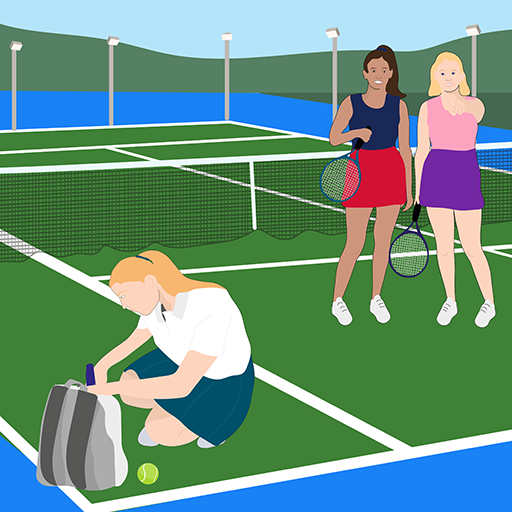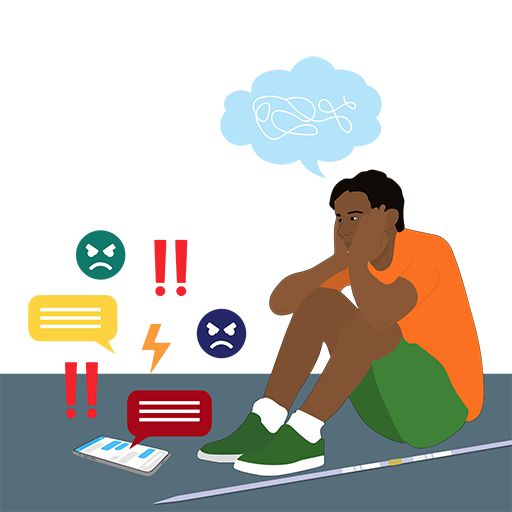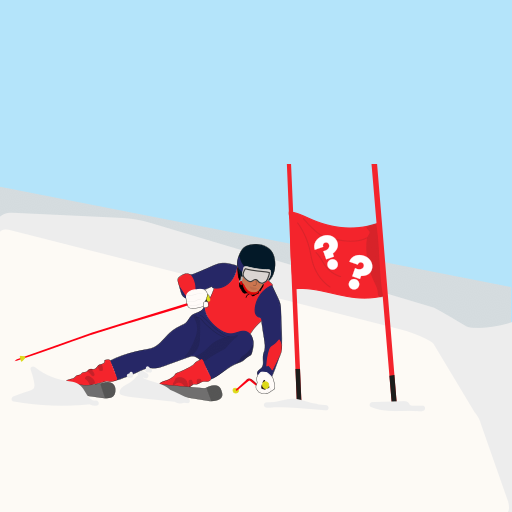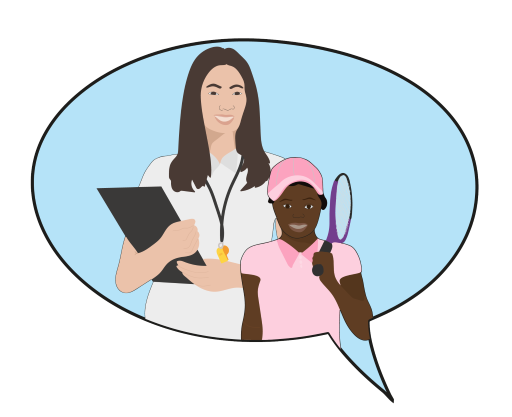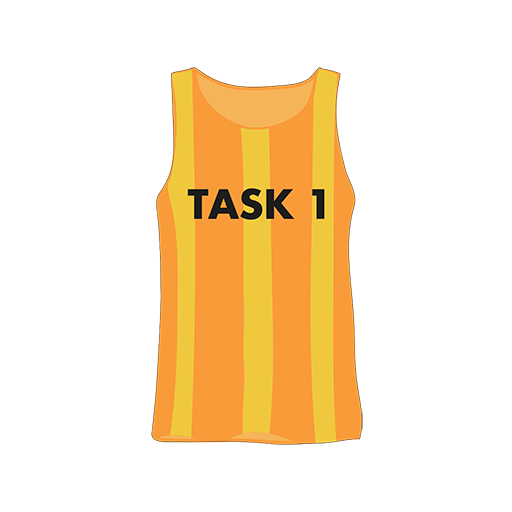Use 'Print preview' to check the number of pages and printer settings.
Print functionality varies between browsers.
Printable page generated Sunday, 23 November 2025, 8:37 AM
Session 2 Understanding abuse, behaviour, and vulnerability
2.1 Introduction
In order to recognise and respond to abuse, it is necessary for you, and others you work with, to have a good understanding of abuse, poor practice, and why some people are more vulnerable than others.
Learning outcomes
In this session, you will explore:
How to recognise different forms of abuse. |
The difference between poor practice and abuse. |
How to recognise behaviours which cause |
How some people are more vulnerable to abuse – and how you can safeguard them. |
Let’s get started.
2.2 The four main types of abuse
Select each of the four tiles below to learn more about each type of abuse
One form of abuse that cuts across all these areas is exploitation. Exploitation is the act of abusing power over someone and/or their assets for personal gain. Examples in sport include:
|
2.3 Examples from sport
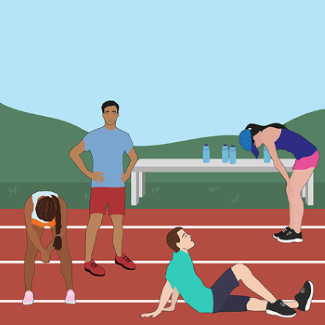 | Physical Forcing athletes to run several times round the track when they haven’t done something the coach asked them to do and punishment by exhaustion for forgetting their kit. |
 | Sexual A 16-year-old golfer was asked by the golf professional at her club to caddy for him in a local tournament. Everything went well on the course, but when the professional dropped her home, he asked her for a kiss. She did not know what to do, so she gave him a peck on the cheek, to which he responded that he wanted a real kiss. |
 | Emotional/Psychological A women’s netball team includes several gender non-binary players. The coach frequently makes comments saying "are you a boy?" and labels their haircut a ‘boycut’. |
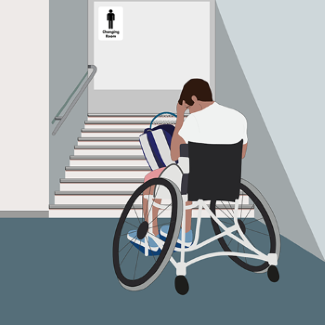 | Neglect A wheelchair user was invited to participate in a tennis competition. There was no accessible changing room and toilet facilities at the venue. Upon raising this, the wheelchair user is told to "stop complaining and adapt". |
If more people understand these different types of abuse, it contributes to a safer environment and safeguarding concerns are more likely to be identified. |
2.4 How are behaviours which cause a safeguarding concern identified?
Recognising behaviour in sport which causes a concern and represents a threat to the welfare of someone is not easy. This is why we are exploring the different types of abuse and focusing on behaviours here at the beginning of the course.
What is poor practice?
Poor practice is behaviour that falls below the standards set by the organisation (usually in the form of a
 The different types of poor practice
The different types of poor practice
Poor practice with a safeguarding concern – this has implications for people’s safety or welfare and should be acted on in line with the safeguarding reporting
Poor practice – this is not a safeguarding issue and does not have implications for people’s safety but it will require a response, for example, by an individual’s manager.
Good practice – these comply with codes of conduct and promote wellbeing.
Read the list of statements below, and then use the drop-down menu to identify those behaviours you think they represent:
Click on the drop-down menu to choose an option.
Comment
Sometimes a poor practice incident may just be the ‘tip of the iceberg’ in terms of an individual’s behaviour. If you have any concerns about someone’s behaviour, you should always record and report it, so that the issue can be looked at further. This will also help the Safeguarding Lead to identify patterns of behaviour.
An environment where ‘minor’ rule-breaking is tolerated is one where individuals who wish to abuse people more seriously think they can get away with it. This is why it’s so important to address poor practice early on. |
2.5 Bullying: what about the actions of other athletes?
Bullying is often found to be the number one concern for children – but it’s not just an issue for children – it also affects many adults in sport. It is a form of emotional/psychological abuse.
 Identify the different types of bullying
Identify the different types of bullying
Think about the different ways people may bully others. Make notes below and then compare it to our list.
Answer
Here is what we came up with – did you think of any different examples?
Bullying can take many forms including:
| Physical – hitting, pushing, kicking or other physical assaults; intimidating; taking or damaging belongings. |
| Verbal – offensive name-calling, insults or gossiping, spreading nasty rumours, constantly undermining someone. |
| Non-verbal – using offensive hand gestures or signs; excluding, ignoring or ‘blanking’ someone. |
| Racist, sexist or |
| Sexual – sexualised name-calling, comments, or threats; inappropriate and uninvited touching; inappropriate sexual propositions. |
| Online – use of social media or text messages to make comments, send threats, and spread rumours and allegations. |
Bullying can have long-term effects and can happen wherever people get together – including within sport.
It’s sometimes assumed that bullying between children is less serious than abuse by adults – but this is not necessarily true. Bullying behaviour always requires a response.
 How can you stop bullying?
How can you stop bullying?
Take a moment to list what could be done in-person and online to protect people from bullying.
Answer
Here are some of our ideas:
- Make sure your safeguarding
policy or code of ethics covers anti-bullying. - Run awareness campaigns about what bullying is and why it should be challenged.
- Include bullying in your
code of conduct . - Educate athletes about cyber-bullying.
The impact of bullying can last a lifetime – it’s always important to act. |
Next, you look in more detail at online bullying.
2.6 How are digital technologies used to bully and harass victims?
The
 Ryan (aged 16) was targeted and bullied online
Ryan (aged 16) was targeted and bullied online
Listen to this account from Ryan and try to list all the different ways that using digital technologies made it easier for David to bully Ryan.
As you listen, also think about how you might tackle this kind of bullying in your organisation.
Transcript
Comment
Bullying of any sort is distressing and damaging, but aspects of online bullying can make it even worse. Online posts are sometimes shared in a group or made publicly available – encouraging further harassment. Digital technologies allow a continual intrusion into every part of the victim’s life – happening at home, in school, and in sport.
Tackling online bullying is an important part of your organisation’s overall approach. Just because something happens in the virtual world and not during a sporting activity, doesn’t make it any less of an organisation’s responsibility, or any less harmful. In the case of Ryan, the online bullying was only addressed when the Safeguarding Lead heard about it from a coach and took action with those involved. |
2.7 Are some people more vulnerable to abuse?
Anyone may experience abuse – this is why organisations need policies and procedures to protect everyone. However, experience and research show that some groups are significantly more vulnerable than others.
‘Vulnerable’ refers to anyone in a position that means they are more exposed to the possibility of being abused. Vulnerable people need particular support and protection to reduce the risk of abuse.
 Identify which groups are generally more vulnerable
Identify which groups are generally more vulnerable
Read all the different groups below and select the six groups that you think research has shown to be more vulnerable to abuse than others. Click on a tile to select it.
Comment
A person’s vulnerability is affected by a range of factors, including but not limited to:
- Age
- Ability
- Gender
- Sexuality
- Ethnicity
- Religion
- Socio-economic status
- Geographical area
- National level of sporting attainment (i.e. elite)
A person’s level of vulnerability can change as circumstances change. Someone who is vulnerable one day, might not be vulnerable the next – or someone that has never been particularly vulnerable may have a change in their circumstances that makes them vulnerable.
Vulnerability can be increased by entering new surroundings, moving away from home, travelling regularly to events, changing teams, or when children compete in adult environments. These are often referred to as forms of ‘transition’. The level of vulnerability can even change as the type of sport changes, from team sports to individual sports which carry different types of risks. |
Next, you explore some groups that can be more vulnerable to abuse.
2.8 People with disability
’Disability’ is used to cover a range of health conditions and impairments. Some conditions are visible and obvious (e.g. people who use a wheelchair) while others are non-visible (e.g. people with autism). The different conditions can be grouped into several broad categories:
- Physical – an impairment which impacts on someone’s mobility or range of movement, for example, people with an amputation or cerebral palsy.
- Sensory – one or more of the senses are affected, such as the degree to which a person can hear or see clearly.
- Intellectual – these impairments vary between mild, moderate, and severe. They are sometimes referred to as learning difficulties or learning disabilities.
- Interaction and communication difficulties – for example, Autistic Spectrum Disorder, which is used to describe a wide range of disorders that impact on a person’s communication style and social interaction.
- A combination – for example, a person with cerebral palsy may have both a physical impairment which impacts on their mobility as well as speech and language difficulties.
Simply naming an impairment will never provide a meaningful picture. Avoid making assumptions about a person based on a general knowledge of a disability category.
2.9 How is disability linked to vulnerability?
What research findings reveal
Research by the World Health Organisation (Bellis et al., 2012) found that children with disability were almost:
- 4 times more likely to experience physical violence.
- 3 times more likely to experience sexual violence.
The presence of multiple conditions or impairments increases the risk of abuse and neglect.
 Why might some people with disability be more vulnerable to abuse?
Why might some people with disability be more vulnerable to abuse?
Take a moment to list reasons why people with disability might be more vulnerable.
Answer
Here are some reasons we came up with – how does this compare to your list?
| Communication difficulties may mean some people can’t easily tell others they are being abused. |
| People with disability may be more isolated – making it easier for them to be targeted for abuse. |
| People with disability may be dependent on others for practical assistance in daily living, including intimate activities like going to the toilet. |
| People with intellectual disabilities may have an impaired capacity to resist, avoid, or understand abuse. |
| People with disability may be relatively powerless – making them an easy target for abusers. |
The social model of disability helps you to reduce vulnerability
The social model of disability was developed by people with disability to change the way we all view the world. It recognises that people are disabled by the barriers they face in society, and not by their impairment.
Barriers can be physical, like buildings not having an accessible entrance for wheelchair users, or they can be caused by people's attitudes, like assuming people with disability can't speak for themselves. The social model helps you recognise barriers so that you can remove them.
In order to address the additional vulnerability people with disability may have, you need to start by recognising that the barriers they face in society can be replicated in sport. Identifying and addressing their barriers can help reduce vulnerability.
2.10 Why are elite athletes more vulnerable?
There are many factors that can put talented athletes at increased risk of abuse. Let’s consider some of the main ones.
 Identify why elite athletes can be more vulnerable
Identify why elite athletes can be more vulnerable
Below we have listed some factors. Match these to the correct explanation. We have provided an answer to help you get started.
| Factor | How may this increase vulnerability to abuse? |
| Intense coach–athlete relationships – they are dependent on the coach for sporting development but also for basic needs, such as rest and nutrition. The coach controls access to the team and/or funding. | The intensity of the relationship and the |
Two lists follow, match one item from the first with one item from the second. Each item can only be matched once. There are 3 items in each list.
For the athlete, their sense of worth depends on their sporting progress – this makes the stakes higher and makes it less likely they will
disclose abuse.These environments are likely to be less supportive of, safe, or appropriate for children.
As a young athlete’s potential professional value increases, their rights as a child can become lost.
Match each of the previous list items with an item from the following list:
a.An athlete’s identity becomes closely linked to their sport and performance.
b.Child athletes are exposed to an adult-orientated environment on and off the pitch.
c.A young athlete is increasingly seen as a commodity.
- 1 = a,
- 2 = b,
- 3 = c
Comment
You may have thought of other reasons. There can be benefits for athletes who progress to the top level, however many cases of abuse show that there are also very real safeguarding risks associated with this. Organisations need to acknowledge and work to address these.
2.11 What about girls and women in sport?
We know that boys and men certainly experience abuse, and that some abusers are women.
However, research suggests that in general in society:
- The majority of victims of sexual abuse are girls and women.
- Most abusers are men.
This reflects the power differences between men and women in many cultures. It drives inequalities, and nurtures discrimination – not least violence against women and girls. Many of these inequalities and associated risks are found in sport.
Organisations need to address the particular risks to women and girls in their sport. An important way to do this is by actively involving them in decision-making and providing opportunities for them to progress into leadership and coaching roles.
2.12 Recognising other vulnerable groups?
Vulnerability to abuse increases for any groups experiencing discrimination.
 Who else might be more vulnerable?
Who else might be more vulnerable?
Take a moment to think about which other groups of people might be more vulnerable to abuse. Make notes below and then compare your list to ours.
Answer
Here are some more examples we thought of – how do they compare to your list?
| People experiencing discrimination due to gender, sexuality, ethnicity, and/or religion. |
| People from low socio-economic backgrounds, including those with poor access to education. |
| People from countries implicated in conflicts. |
Acknowledging why, how, and when some individuals are more vulnerable than others in a given context helps your organisation to take steps to reduce risks and build in support.
It’s also important to recognise that some people may be members of different groups at the same time. For example, a Muslim woman with a disability in a community where Christians are the majority. This concept is called intersectionality – the different vulnerabilities ‘intersect’ and can make someone even more vulnerable to risk.
Understanding the ways people can be vulnerable and how these intersect is important in building the right safeguarding support.
2.13 Applying your learning
This is the first of two occasions in the course where we ask you to apply your learning outside the course in your own time.
These tasks will help you deepen your understanding and apply your learning in real life, and do not form part of the course assessment
Task 1
Identify what your organisation is already doing to raise awareness about types of abuse.
- For this task, you need to find and collate information about the information your organisation is sharing with staff and athletes, to help them recognise and respond to abuse.
- Research what information your organisation shares through social media, on their website, and on other platforms about abuse in sport.
- Make a list of any different kinds of abuse (e.g. physical, sexual, emotional, neglect) as well as the different audiences that can access the information (e.g. parents, athletes, staff, etc.).
- Are there gaps in the information your organisation provides? Make sure you pass this on to the Safeguarding Lead.
You will receive feedback comments on this task at the start of the next session.
2.14 Summary of Session 2
| The main learning and messages from this session are: |
|
When you are ready, move on to Session 3 Understanding and recognising the grooming process, where you will explore the concept of grooming.

